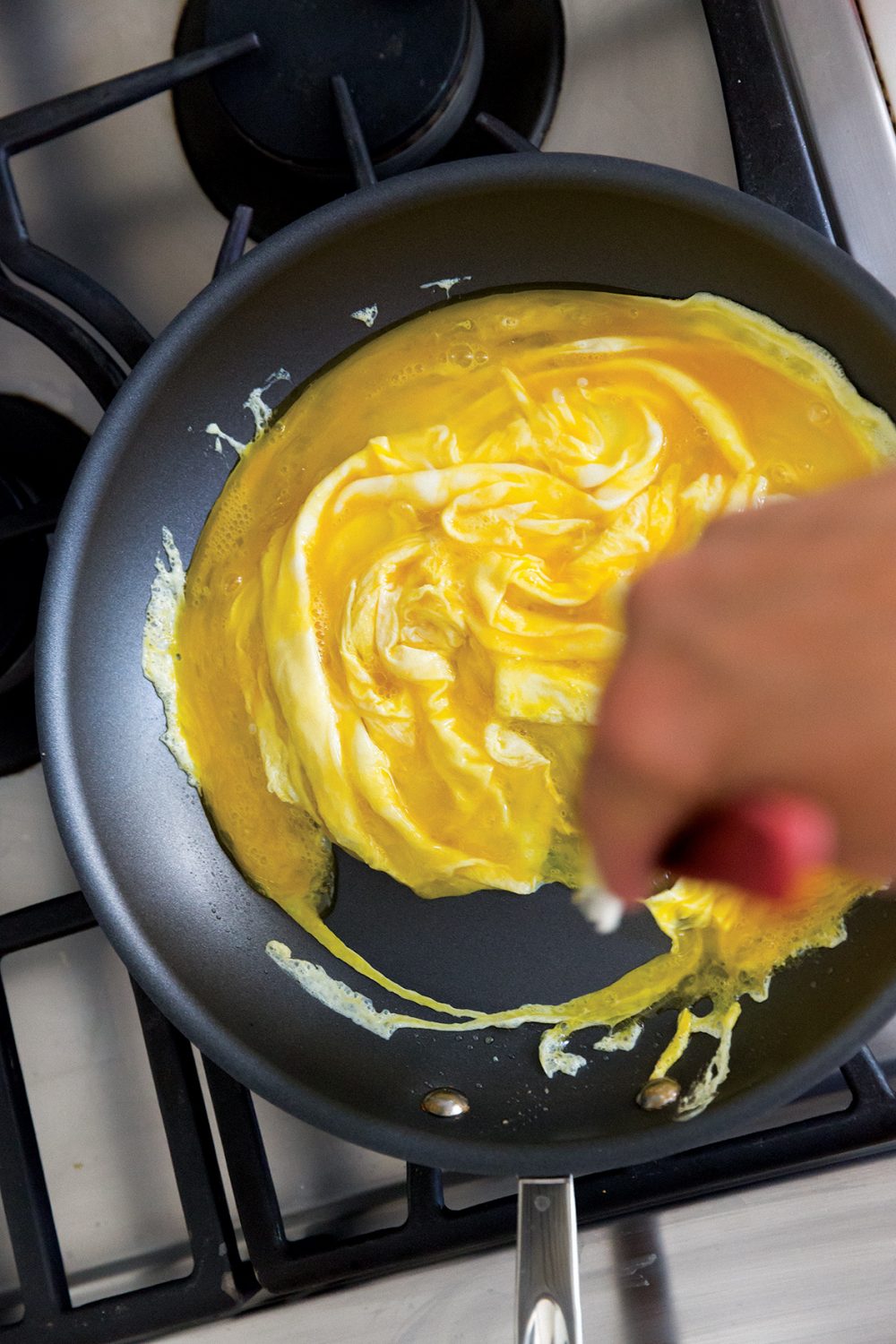After her husband struggled to make eggs in a cast-iron skillet, Milk Street Radio listener Elizabeth O’Neil, of Warwick, Rhode Island, wondered if it simply isn’t the right pan for the job. Would carbon steel be a better choice?
At Milk Street, we’re fans of both cast-iron and carbon-steel pans, but they aren’t always interchangeable.
Cast-iron pans are made from molten iron that has been poured (or “cast”) into a mold. New cast-iron pans have a rough, pitted surface that requires seasoning, a process that coats the pan with heated fat or oil to produce a nonstick-like surface. Carbon-steel pans are made from an alloy of iron and carbon that is rolled into sheets and stamped into shape, yielding a more lightweight pan.
Cast iron heats more slowly and retains heat longer; carbon steel heats and cools more quickly, ultimately giving cooks more control over temperature.
Cast-iron pans are our choice for foods that require even, concentrated heat: searing steaks or crisping noodles, for example. But for items that we want to cook quickly—such as eggs and sautés—we often reach for carbon-steel pans. They also have a smoother surface, so they perform better with delicate foods and are less likely to promote sticking.
As for how each performs when cooking eggs, it comes down to style of cooking. In our tests, both pans performed well, but temperature is key. For those who prefer to cook their eggs low and slow, carbon steel is the better choice. Over low heat, eggs tended to stick to the porous surface of even well-seasoned cast-iron skillets.
Conversely, at higher temperatures, the cast-iron performed well, while the carbon-steel pan heated too quickly to properly fry an egg. That said, with sufficient oil—we used 1 teaspoon—both skillets got the job done.
See here for more Milk Street Radio listener questions.
How to Clean a Cast Iron or Carbon Steel Pan, According to Christopher Kimball
Join the conversation on Facebook, Twitter, Instagram and Pinterest.




